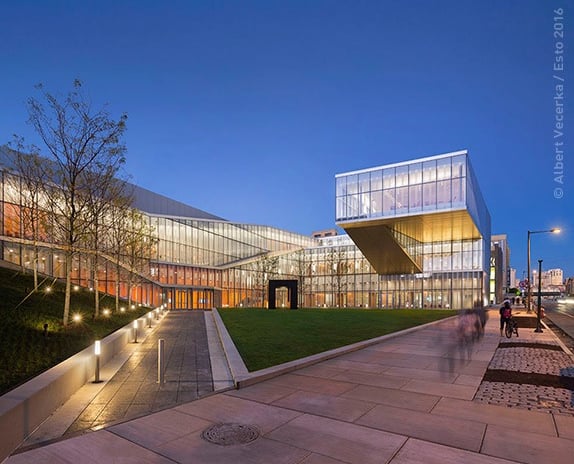Glass in Modern Architecture
A Shining Example at the University of Pennsylvania Nanotechnology Center
EBNZR NEWS
Karlla Marinho
6/26/20242 min read


Glass, a widely popular architectural material, has gained more and more space in modern buildings due to its attractive aesthetics and functionality. In addition to allowing natural light to enter and creating a feeling of fluid space, glass is recyclable and economical, characteristics that are becoming essential for contemporary architects concerned with sustainability. In particular, the use of glass in urban skyscrapers has stood out, as large glass facades provide panoramic views of the urban landscape while expanding the perception of space in densely occupied areas.
A notable example of this trend is the Krishna P. Singh Nanotechnology Center, located on the eastern edge of the University of Pennsylvania. Described as a "stately vessel bathed in celestial light" by a Bloomberg writer, the building stands as a fine example of elegant and functional glass building design. This three-story building, designed by renowned designers WEISS/MANFREDI, cost $92 million and was designed to encourage collaboration and exchange of knowledge, fundamental characteristics in the study of nanotechnology.
"Glass is a material that, in addition to its beauty, allows the creation of collaborative and integrated spaces, essential for research and innovation," says one of the architects at WEISS/MANFREDI.
Wrapped in a coated glass curtain, the building allows natural light to flood the interior, creating a welcoming and stimulating environment for researchers and scientists. The building's key feature is its highest elevation, which houses a meeting space overlooking the campus and city, providing an inspiring place to exchange ideas and collaborate.
Inside the Nanotechnology Center, completed this year, a long orange-pane window filters ultraviolet light, discreetly lining the gallery wall and concealing a series of 10,000-square-foot, two-story-high laboratories. This clever design not only protects occupants from UV rays but also adds a vibrant pop of color to the work environment.
"The use of glass in the Nanotechnology Center not only meets the functional needs of the laboratories but also creates a space where science and architecture meet harmoniously," highlights one of the project's designers.
The Krishna P. Singh Nanotechnology Center is a shining example of how glass can be used to create buildings that are both aesthetically pleasing and highly functional. As architects continue to explore the possibilities of glass, expect more inspiring buildings like this to emerge, transforming our urban landscapes and promoting healthier, more collaborative work environments.
